Nuclear Energy
A community for nuclear energy enthusiasts.
Source: https://www.world-nuclear-news.org/Articles/China-develops-fast-reactor-used-fuel-container
China has developed a 100-tonne transport container for used fuel from large fast reactors, the China Institute of Atomic Energy (CIAE) announced. Following test verification of a full-scale prototype container, the design has obtained design licence approval.
The transport container adopts a multi-layer sandwich structure and uses a composite foam aluminum buffer, which can effectively solve the design problems of shielding and buffering of the used fuel transport container, CIAE said.
At the same time, CIAE has also built the country's first large-tonnage vacuum lead casting bench and a special boron-containing silicone resin pouring bench to meet the lead and boron-containing resin casting needs of large used fuel transport containers. The institute noted the container took two years from conceptual design to obtaining design licence approval, "setting a new record for the development cycle of large used fuel transport containers in China".
The transport container was independently developed and designed by the CIAE, and the test prototype was independently processed and manufactured. The China Institute of Radiation Protection independently conducted a 1:1 prototype test verification.
Receiving design licence approval for the design "marks that China has fully mastered all key technologies for spent fuel transport containers for large fast reactors, breaking the long-term dependence on imports of this type of transport container", CIAE said.
It added: "It has achieved breakthroughs in innovation, industrialisation and type-specification of fast reactor spent fuel transportation containers with independent intellectual property rights in China from scratch, laying a solid foundation for the development of fast reactors in China."
CIAE said the container is "a key equipment for the implementation of China's large fast reactor spent fuel transportation, and is also a key step in the key technology research project of fast reactor transportation containers".
China National Nuclear Corporation expects fast neutron reactors to become the predominant reactor-type by mid-century. A 65 MWt fast neutron reactor – the Chinese Experimental Fast Reactor (CEFR) - near Beijing achieved criticality in July 2010, and was grid-connected a year later. Based on this, a 600 MWe pre-conceptual design was developed, known as the Chinese Demonstration Fast Reactor (CDFR) project 1. The first CFR600 unit began construction in December 2017 at Xiapu in Fujian province, and commissioning is expected soon. Construction of the second unit began in December 2020. The CFR600 units are intended to be followed by a CFR1000 for commercial operation from 2030, according to CIAE.
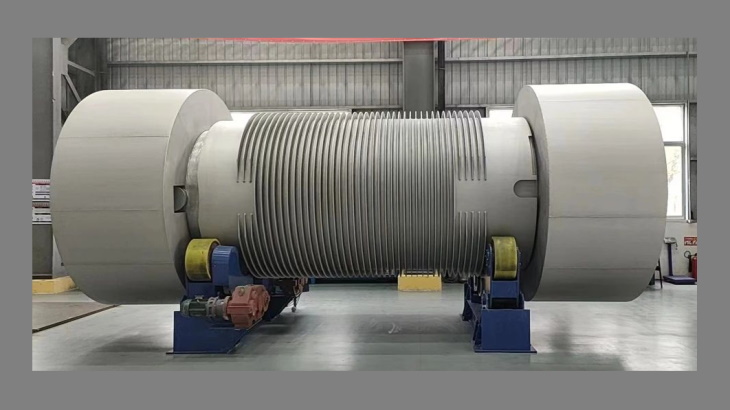
Source: https://www.world-nuclear-news.org/Articles/NRC-approves-Hermes-construction-permit
Kairos Power will build the Hermes molten salt-cooled demonstration reactor at the Heritage Center Industrial Park in Oak Ridge, Tennessee. It is the first non-water cooled reactor to be approved for construction in the USA in more than 50 years.
The US Nuclear Regulatory Commission (NRC) voted to issue the permit after reviewing the company's application to construct the non-power test reactor. A mandatory hearing was held in October.
The NRC accepted the Hermes construction permit application for review in November 2021, but Kairos began pre-application engagement with the regulator in 2018. This extensive engagement - which established lines of communication between the two organisations - made it possible for the NRC to complete its review of the application well ahead of schedule, Kairos said.
“Kairos Power is thrilled to have achieved this major regulatory milestone as we make final preparations to start construction at the Hermes site next year. We are excited for this next phase in the deployment of the Hermes reactor, and we remain committed to being a good community partner to our neighbors in Oak Ridge as we bring value to the region and build on its nuclear legacy," said Kairos Power co-founder and CEO Mike Laufer.
Hermes will be a 35 MW (thermal) non-power version of the company's fluoride salt-cooled high temperature reactor, the KP-HFR. Kairos has also submitted a construction permit application for Hermes 2, a proposed two-unit demonstration plant that would build on the learnings from Hermes and would demonstrate the complete architecture of future commercial plants. Hermes 2 will produce electricity. The Hermes demonstration reactors will help mitigate technology, licensing, supply chain, and construction risk to achieve cost certainty for KP-HFR technology, Kairos said. The company is targeting commercial deployments in the early 2030s.
The NRC issued the final environmental impact statement for the site in August and the final safety evaluation for the permit in June. Kairos will have to submit a separate application for an operating licence before starting up the demonstration reactor.
Hermes is one of several new reactor technologies to receive federal support through the US Department of Energy's (DOE) Advanced Reactor Demonstration Program. US Assistant Secretary for Nuclear Energy Kathryn Huff said the NRC approval is a "huge milestone" for the energy sector. "NRC's approval of the first ever CPA granted to a Generation IV reactor charts a path forward for future design applications as we work toward deploying new reactor technologies," she said. "This accomplishment is a testament to the collaborative work among Kairos, the NRC, DOE and all stakeholders involved in the project."
Kairos is currently testing the high-purity fluoride salt coolant - known as Flibe - at its first engineering test unit (ETU) in New Mexico. The company plans to build and operate three ETU iterations before constructing Hermes.
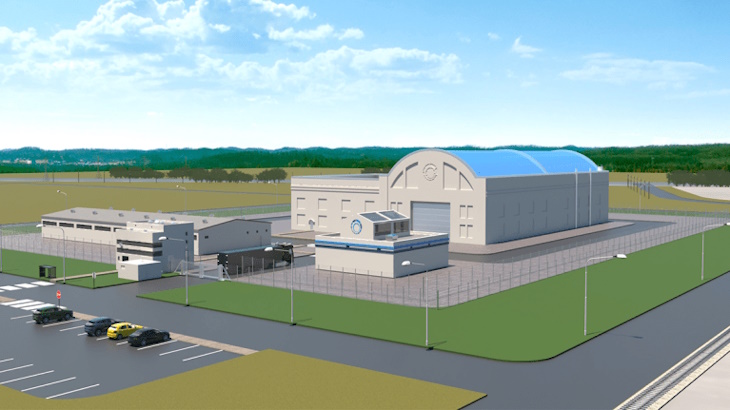
Source: https://www.world-nuclear-news.org/Articles/South-Africa-to-begin-new-nuclear-procurement
As the second unit at the Koeberg nuclear power plant goes offline for an extended maintenance outage, South Africa's Department of Mineral Resources and Energy (DMRE) has confirmed it will go ahead with the procurement of 2500 MWe of new nuclear capacity with plans to issue requests for proposals by March 2024.
The National Energy Regulator of South Africa (NERSA) has said the DMRE can proceed with the procurement process after it satisfied a set of "suspensive conditions" imposed by the regulator, Minister in The Presidency responsible for Electricity Kgosientsho Ramokgopa announced at a livestreamed media briefing.
The DMRE submitted a report to the regulator addressing these conditions in July, Ramokgopa said. NERSA has now concluded that those conditions had been satisfactorily addressed, issuing a formal concurrence on 2 September. This means that the ministerial determination of 2020 to begin the process to procure the new nuclear capacity will now be gazetted. "We are triggering now... essentially a procurement process. We are going out to ensure that we are able to get that additional 2500MW of nuclear capacity to ensure that we are able to meet issues of national security and energy sovereignty," Ramokgopa said.
Extending Koeberg
Nuclear power is an important part of South Africa's 2019 Integrated Resource Plan, which called for the country to make preparations for new nuclear capacity, alongside the continued operation of the existing Koeberg nuclear power plant. The two units at the plant have a combined capacity of 1860 MWe and generate around 6% of the country's electricity. Currently licensed to operate until 2024 and 2025, respectively, utility Eskom has applied to the country's nuclear regulator to extend the operating life of the plant by an additional 20 years beyond its initial 40-year operating life.
Koeberg unit 1 was synchronised to the energy grid on 18 November after nearly a year offline for the replacement of the plant's three original steam generators, a prerequisite for the long-term operation of the plant. Koeberg 2 is to undergo similar work, and Ramokgopa confirmed that now unit 1 is running at full load, unit 2 was taken offline on 11 November for it to be carried out. It is expected to return to service by August, he added.
South Africa continues to face electricity constraints and loadshedding, and nuclear has proven to be a reliable source of energy to ensure future energy security and energy sovereignty, the minister said. "Of course, we continue to make every effort to address load shedding because the benefit of what we are announcing, you are not going to see it tomorrow, you'll not see it in a year’s time, you won’t see it in two years' time. In three to four years, that’s when you’ll begin to see the benefits."
New head for Eskom
The ministerial announcement was made days after state-owned Eskom confirmed the appointment of Dan Marokane as its new group chief executive. Marokane will assume the position "no later than" 31 March.

Source: https://www.world-nuclear-news.org/Articles/Akkuyu-unit-1-gets-commissioning-permit
Turkey's Nuclear Regulatory Agency (NDK) has issued permission to the Akkuyu nuclear power plant to commission the first power unit.
Application documentation was submitted to NDK in two stages in March and August, ahead of the approval which has now come from the NDK's council. The permit makes it possible to proceed to the start-up, set-up and operation processes, which are the final stage of the nuclear power plant (NPP) construction and form the basis for the future safe operation of the plant.
Anastasia Zoteeva, CEO of Akkuyu Nuclear JSC, said: "Licensing is an extremely important stage that permeates all stages of the life-cycle of a nuclear power plant: site selection, design, construction, operation and decommissioning. In the case of Akkuyu NPP, the first nuclear power plant in Turkey, we are going through all licensing stages for the first time. At the same time, the national regulator relies on the experience of issuing licences and other permits in Russia, where four similar power units with VVER-1200 reactors are already successfully operating.
"The decision of the Turkish Nuclear Regulatory Agency to issue a permit to commission the first unit of the Akkuyu NPP confirms that we have fulfilled all the requirements of Turkish legislation, international standards for the construction of nuclear power plants, and are ready to move on ... With the receipt of permission to commission the first unit of the Akkuyu NPP, we are entering a new, important and responsible stage in the life of the project."
Last week all the reactor internals of the first unit were installed in the design position for conformity inspection - the assembled reactor is 19.3 metres long, with a diameter of 4.8 metres and a weight of 600 tonnes. The next step for licensing will be obtaining one to operate the unit, which will allow nuclear fuel to begin to be loaded into the reactor.
The Akkuyu plant, in the southern Mersin province, is Turkey's first nuclear power plant. Rosatom is building four VVER-1200 reactors, under a so-called BOO (build-own-operate) model. According to the terms of the Intergovernmental Agreement between the Russian Federation and the Republic of Turkey, the commissioning of the first power unit of the nuclear power plant must take place within seven years from receipt of all permits for the construction of the unit.
The licence for the construction of the first unit was issued in 2018, with construction work beginning that year. Nuclear fuel was delivered to the site in April this year, with Rosatom Director General Alexei Likhachev saying that the aim was to carry out a physical start-up in 2024. The 4800 MWe plant is expected to meet about 10% of Turkey's electricity needs, with the aim that all four units will be operational by the end of 2028.
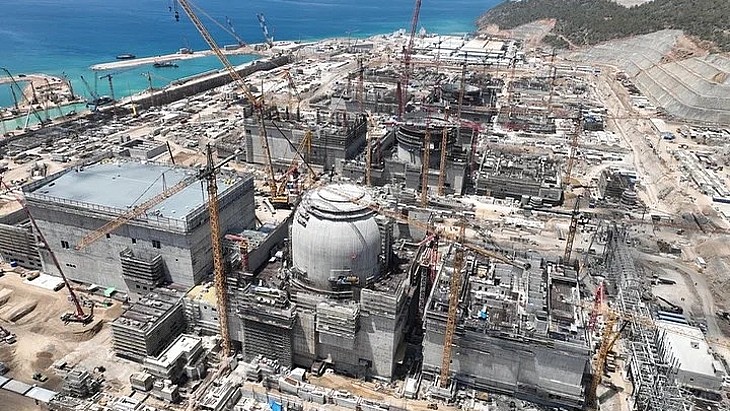
Source: https://www.world-nuclear-news.org/Articles/Decommissioning-of-Grohnde-set-to-begin
The Lower Saxony Ministry for the Environment, Energy and Climate Protection has issued the first decommissioning and dismantling permit to PreussenElektra for the Grohnde nuclear power plant (KWG).
PreussenElektra - a subsidiary of EOn Group - applied for approval to decommission and dismantle the 1360 MWe pressurised water reactor in October 2017.
After six years of review, the Ministry of the Environment has now approved the individual procedural steps for the decommissioning and dismantling of the plant.
"Over the past six years, many colleagues have worked to ensure that we can now hold the permit in our hands," said Plant Manager Peter Schwarz. "It's great that we can now get started and put our preparatory planning work into action."
The company said that since Grohnde shut down on 31 December 2021, "the prerequisites for the dismantling of the system have been created, ie among other things, the primary cooling circuit has been decontaminated, systems and components that are no longer required have been taken out of operation, and the personnel organisation has been adjusted. Replacement systems were installed and put into operation to supply the system with energy".
The next steps in the plant's dismantling will be to create new logistics routes within the control area and to establish a residue processing centre in the reactor building for the dismantled material. In addition, systems that are no longer required will be shut down and preparations will be made for dismantling the components in the reactor pressure vessel. At the same time, the remaining fuel elements in Grohnde's wet storage facility will be transported to the approved interim storage facility for highly-radioactive fuel elements at the plant site. The nuclear dismantling is scheduled to be completed by 2037.
During the dismantling of Grohnde, around 15,000 tonnes of material from the control area are expected to be dismantled, measured and cleaned with the aim of recycling them. Residues from dismantling that cannot be released will be treated as low- and intermediate-level radioactive waste. These will be separated, treated, packaged and made available at the location in the transport preparation hall that is yet to be built. From there it will then be transported to the future final disposal facility, the Konrad repository.
PreussenElektra is responsible for the decommissioning of eight nuclear power plants in Germany. Isar 2 was the last of the PreussenElektra plants to cease operations on 15 April this year. The Brokdorf and Grohnde plants were shut down on 31 December 2021. With the already decommissioned Isar 1, Stade, Unterweser and Würgassen plants, all of PreussenElektra's nuclear facilities are now in various phases of decommissioning and dismantling.
"With the KWG, all three PreussenElektra plants in Lower Saxony are now in the process of being dismantled: conventional demolition of power plant buildings has recently begun at the Stade nuclear power plant, and dismantling is in full swing at our Unterweser nuclear power plant," said PreussenElektra CEO Guido Knott.
"With the knowledge from these dismantling projects, we are well prepared and confident that we will be able to complete the nuclear dismantling of the KWG as planned at the beginning of 2037."
PreussenElektra's goal is to dismantle its power plant fleet by 2040.
Final CASTOR order for German plant
German radioactive waste specialist GNS Gesellschaft für Nuklear-Service mbH said that the last of its CASTOR used fuel storage casks for a German nuclear power plant is expected to be delivered to Grohnde in 2025.
So far, more than 1400 CASTOR casks supplied by GNS have already been loaded with used fuel and vitrified reprocessing waste from German nuclear power plants and are stored in on-site as well as centralised interim storage facilities. The company will deliver around 150 more of the 100-plus tonne dual-purpose casks in the coming years.
GNS has now signed its final order from a German power plant operator for a CASTOR cask. In November, PreussenElektra ordered its last cask from GNS which will be used at Grohnde.
To date, around 260 CASTOR casks have already been loaded and stored at the five PreussenElektra sites. By the end of the decade, this figure is expected to rise to 328. A total of more than 1600 CASTOR casks will eventually be in safe interim storage in Germany in the on-site and centralised interim storage facilities, as well as in the interim storage facilities of research and federal institutions.
"The last CASTOR order for a German nuclear power plant is definitely a significant milestone for us, but it does not mean the end of our cask business by a long shot," said GNS CEO Daniel Oehr. "Based on the experience we have built up over the decades and our sophisticated product range, we already have long-term orders from foreign power plant operators, for example from Switzerland and Belgium.
"In the last seven years alone, GNS has received orders for more than 120 CASTOR casks from customers outside Germany. And we are working hard to win new customers from other countries."

Bekijk de video op de website van de gemeente Den Helder: https://gemeenteraad.denhelder.nl/Vergaderingen/Beeldvormende-avond-Raadzaal/2023/11-december/19:30/Small-Modulair-Reactor-s-Nederland-en-de-Kop-van-Noord-Holland-20-45-uur-21-45-uur
Instead of opposing nuclear power, climate activists should be thronging the streets demanding a faster rollout.
Dubai, United Arab Emirates—"It's been a very good COP for nuclear energy," said Jonathan Cobb of the World Nuclear Association. He was referring to COP28, this year's United Nations summit on climate change, which had given his industry several reasons for optimism. Most notably, 22 countries—including the United States, the U.K., France, Japan, and South Korea—had issued the ministerial Declaration to Triple Nuclear Capacity by 2050.
"COP28 will be known as the nuclear COP," Australia's shadow climate minister, Ted O'Brien, declared on one panel. And America's climate envoy, former Secretary of State John Kerry, proclaimed when the declaration was announced that "you can't get to net zero in 2050 without nuclear power."
"Net zero" is the condition where the anthropogenic emissions of greenhouse gases are balanced by removal from the atmosphere—one of the targets set by the Paris Climate Change Agreement. Kerry noted that nuclear energy currently supplies a third of the world's low-carbon electricity.
This increased recognition of nuclear energy as a climate-friendly power source builds on the progress I reported at last year's climate summit in Egypt. The declaration recognizes that "nuclear energy is already the second-largest source of clean dispatchable baseload power, with benefits for energy security." (Baseload means power generation that generally runs continuously throughout the year and operates at stable output levels. This contrasts with variable power sources, such as solar and wind: It isn't always sunny or windy.)
The countries issuing the declaration also "commit to supporting the development and construction of nuclear reactors, such as small modular and other advanced reactors for power generation as well as wider industrial applications for decarbonization." An example of those "wider industrial applications" would be the X-Energy small modular gas-cooled reactors Dow Chemical is using at its manufacturing plant on the Gulf Coast of Texas.
Another advantage of nuclear power plants is their relatively small size compared to the extensive and often remote areas needed to deploy wind and solar power. As Cobb pointed out, nuclear reactors can be slotted into the sites of decommissioned coal and natural gas power plants. The new nuclear power plants can run the already installed turbines and transmit the electricity they generate through already installed transmission lines. And the local communities are already set up to operate power plants.
As it happens, Terrapower announced earlier this year that it will build its advanced Natrium nuclear reactor near a retiring coal plant in Kemmerer, Wyoming.
All too predictably, various environmental groups at COP28 denounced the declaration. "Promoting a nuclear expansion at COP 28 is only a plan for climate failure," asserted Tim Judson, head of the U.S.-based Nuclear Information and Resource Service, in a press release. Lise Masson of Friends of the Earth International added: "We have no time to waste on such false solutions that only delay and distract real and adequate action to address the climate crisis."
These activists point out that it takes a long time to build a new reactor. Of course, these delays are largely the result of their own decades of support for crippling overregulation.
In a 2017 study in Energies, the Australian economist Peter Lang calculated that if the heavy regulation championed by anti-nuclear activists had not prevailed during the 1970s and '80s, nuclear power "could have replaced up to 100% of coal-generated and 76% of gas-generated electricity" globally by 2015. Had the earlier learning-curve trajectory been allowed to continue, nuclear power plant construction costs would be 10 percent of what they are now. This would have cut cumulative carbon dioxide emissions by 174 gigatons, and annual carbon dioxide emissions would now be one-third less.
About 440 nuclear reactors are operating now, with 60 more in construction and 110 more on the drawing boards. The goal of tripling nuclear energy production implies the construction of 880 new power plants by 2050. That would mean building an average of 34 new reactors every year from now til then.
Would that actually be enough? While nuclear power generates a significant amount of the world's electricity, it supplies only about 5 percent of the world's primary energy. Fossil fuels still account for around 80 percent of primary energy consumption. If you really want to cut greenhouse emissions over the course of this century, you'd need to increase the world's nuclear capacity much more—tripling won't be enough.
If climate activists were serious about addressing what they call the climate crisis, they would be thronging the streets demanding a more streamlined approval process, enabling a much faster nuclear-power rollout.
Moscow accounts for more than 20% of nuclear fuels for American reactors.
The US House voted on Monday (12 December) to approve legislation that would bar the importation of low-enriched Russian uranium.
The Prohibiting Russian Uranium Imports Act would make it illegal to import low-enriched uranium, which is used in nuclear fuel, 90 days after the bill becomes law.
It would also allow for a waiver if “no alternative viable source of low-enriched uranium is available to sustain the continued operation of a nuclear reactor or a United States nuclear energy company”.
Russia provided almost a quarter of the enriched uranium used to fuel the US’s fleet of 93 nuclear plants, making it the number one foreign supplier to the US last year, according to the US Department of Energy.
According to the US Energy Information Administration, Russia has been supplying about 24% of enriched uranium with 12% from Germany and 11% from the UK. The US itself supplies 27%.
Russia is also the only commercial source of special highly enriched reactor fuel known as Haleu that is needed for a new breed of advanced nuclear reactors that are under development.
Providers in the US, with federal support, are in the process of producing Haleu. Centrus Energy recently delivered a first batch of Haleu fuel to the US Department of Energy (DOE), finalising the first phase of a domestic manufacturing demonstration process.
Senators Joe Manchin of West Virginia and John Barrasso of Wyoming, the top Democrat and Republican on the Senate Energy and Natural Resources Committee, have both said they believe the measure will now clear the Senate, where it has support but limited time for passage this year.
Ahead of the vote, Washington Republican Cathy McMorris Rodgers and New Jersey Democrat Frank Pallone spoke in favour of the bill.
“One of the most urgent security threats America faces right now is our dangerous reliance on Russia’s supply of nuclear fuels for our nuclear fleet,” Rodgers said, adding that the war in Ukraine “intensified” the issue.
Bill Ensures US Will ‘Lead The Way’
Rodgers said last year alone, the US nuclear industry paid over $800m (€740m) to Russia’s state-owned nuclear energy corporation Rosatom and its fuel subsidiaries.
On social media platform X, she said: “My bill, the Prohibiting Russian Uranium Imports Act, just PASSED the People’s House to strengthen our national security by cutting our reliance on Russian-sourced fuels and ensuring America will lead the way with reliable, zero-carbon nuclear energy.”
Pallone said: “The combination of banning imports of Russian uranium and investing in domestic capacity will provide private industry with both the certainty and the incentives it needs to invest in the nuclear fuel supply chain.”
At the Cop28 climate conference in Dubai last week, leaders from the US, Canada, France, Japan and the UK – a group of G7 nations informally known as the Sapporo 5 – announced plans to mobilise $4.2bn (€3.9bn) in government-led investments to develop a secure, reliable global nuclear energy supply chain.
The investments will increase uranium enrichment and conversion capacity over the next three years and establish a resilient global uranium supply market free from Russian influence.
Russia controls almost 50% of global enrichment capacity and has worked successfully to undermine the US nuclear supply chain over many years by dumping cheap enriched uranium products on world markets, Kathryn Huff, assistant secretary for nuclear energy, said recently.
Source: https://www.world-nuclear-news.org/Articles/Nuclear-included-in-NZIA-by-European-Council
The European Council has adopted its position on the proposed Net-Zero Industry Act (NZIA), which is intended to bolster Europe's manufacturing output in technologies needed for decarbonisation. As with the European Parliament's position, issued last month, nuclear power has been included in the list of "strategic" technologies.
The NZIA - proposed by the European Commission in March - sets a target for Europe to produce 40% of its annual deployment needs in net-zero technologies by 2030 and to capture 25% of the global market value for these technologies. The legislation - part of the EU's Green Deal Industrial Plan and seen as a response to the USA's Inflation Reduction Act - also intends to deal with the challenges in scaling up manufacturing capacities in these technologies.
Nuclear was only partially included in the commission's proposal for NZIA. Among the 10 technologies it proposed was "advanced technologies to produce energy from nuclear processes with minimal waste from the fuel cycle, small modular reactors, and related best-in-class fuels".
In late-October, the heads of state and governments called on the European Council and the European Parliament to reach a prompt agreement on the Net-Zero Industry Act, "with a view to finalising the new bill before the end of the current legislative cycle".
The European Parliament adopted its position on the proposed law on 21 November, including nuclear fission and fusion among a list of 17 technologies covered by the legislation.
Adopting its decision on 7 December, the council said it "supports the main objectives of the Net-Zero Industry Act, but introduces several improvements, like enlarging the scope of application, clarifying the rules for permit-granting procedures, access to market and public procurement and promoting skills, research and innovation".
It added: "As compared to the commission proposal, the council position increases the list of strategic net-zero technologies from 8 to 10, by including nuclear and sustainable alternative fuels. It also makes clear that this should not affect neither a Member State's right to determine their energy mix nor the allocation of EU funds during the current multiannual budget.
"The mandate also enlarges the list of non-strategic net-zero technologies to biotech climate and energy solutions, other nuclear technologies and transformative industrial technologies for energy-intensive industries."
Under the Council position, strategic net-zero technologies will benefit from streamlined and realistic permitting procedures and from additional support to crowd-in investments while still meeting EU and international obligations.
There will now be negotiations to finalise the text in so-called 'trilogue' talks between the EU Parliament, European Council and European Commission.
"We are of course delighted with the council's decision on nuclear under the Net-Zero Industry Act," said Yves Desbazeille, Director General of European nuclear trade body Nucleareurope. "We hope that this decision will now be maintained in the final compromise between the different EU institutions during their negotiations early next year."

Source: https://www.world-nuclear-news.org/Articles/Shefield-Forgemasters-aims-to-regain-key-nuclear-a
The UK company says it is on track to regain ASME status as a supplier of heavy forgings and castings to the civil nuclear market, to position it for the proposed large-scale expansion of nuclear capacity in the country.
Sheffield Forgemasters, which was acquired by the UK's Ministry of Defence in 2021, says an American Society of Mechanical Engineers (ASME) Section III Division I NCA 3300, NCA 4000 and NQA-1 Code survey and audit, recommended it for Material Organisation (MO), and welding (NPT) accreditations. ASME MO and NPT status means it can supply castings and forgings (material) for civil nuclear applications and also be qualified to carry out weld construction activities on these materials.
The ASME committee on nuclear certification is now expected to approve the audit's findings and grant the certificate, making the company the only UK producer of such heavy forgings and castings to physically weld-fabricate what are safety-critical components for nuclear power plants. The company, based in the city of Sheffield, originally gained ASME accreditation as a Nuclear Material Organisation in 1992, but that had lapsed, with the lack of nuclear new-build in the following years, instead the focus being on developing technologies for SMRs.
Sheffield Forgemasters Group Technical Director Ian Nicholls said: "The accreditation is a huge development with enhanced requirements and disciplines embracing all our processes, employees and selected sub-suppliers. Code compliance is a significant undertaking for any company wishing to enter the UK civil nuclear supply chain, requiring comprehensive understanding to avoid code violation. Businesses will need to understand how to engage with this process and currently, very few UK companies do."
The UK's energy strategy, unveiled in April, set the target for eight new reactors plus small modular reactors to produce 24 GWe capacity by 2050, meeting about 25% of the UK's projected electricity demand. The UK currently generates about 15% of its electricity from about 6.5 GW of nuclear capacity. The first new nuclear capacity in the UK for about 30 years is being built by EDF at Hinkley Point C - two EPRs producing 3.2 GW of electricity - with a final investment decision also expected on a similar sized project at Sizewell C within the next few months.
There is currently a selection process taking place for SMR technology to be adopted in the UK with six companies - Holtec, Rolls-Royce, Nuward, NuScale, GE Hitachi and Westinghouse - shortlisted ahead of an announcement scheduled for Spring 2024 on which the government will support. The aim is for a final investment decision in 2029, with operational SMRs delivered by the mid-2030s.
Sheffield Forgemasters traces its origins back to the 1750s and it says its global markets "include defence, civil nuclear, offshore, power generation, renewables, steel plant, steel processing and ingot & bar. It has signed memorandums of understanding with a number of SMR developers in the UK, including Rolls-Royce SMR, NuScale, GE Hitachi Nuclear Energy, Holtec Britain and X-energy.
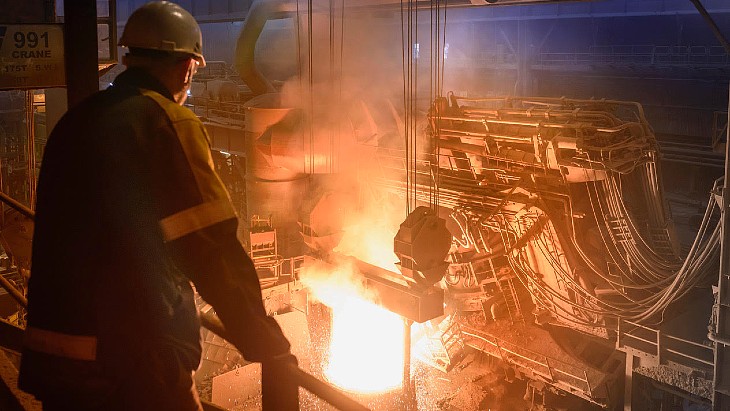
Source: https://www.world-nuclear-news.org/Articles/Hyundai,-KAERI-team-up-for-export-of-SMART-SMR
Hyundai Engineering and the Korea Atomic Energy Research Institute (KAERI) have signed a memorandum of understanding to collaborate on the commercialisation and export of the Korean-designed SMART small modular reactor (SMR) overseas.
The agreement was signed by Hyundai Engineering CEO Hong Hyun-seong and KAERI President Joo Han-gyu at KAERI's headquarters in Yuseong-gu, Daejeon.
Under the MoU, Hyundai Engineering will be responsible for business development, financing and EPC (engineering, procurement, and construction) for SMART verification and commercialisation, while KAERI will be responsible for support tasks such as reactor design and licensing.
Korea's SMART (System-integrated Modular Advanced Reactor) is a 330 MWt pressurised water reactor with integral steam generators and advanced safety features. The unit is designed for electricity generation (up to 100 MWe) as well as thermal applications, such as seawater desalination, with a 60-year design life and three-year refuelling cycle.
While the basic design is complete, development has been stalled by the absence of any orders for an initial reference unit. Developed by KAERI, SMART received standard design approval from the Korean regulator in mid-2012. KAERI had planned to build a demonstration plant to operate from 2017.
In April this year, KAERI signed an MoU with the Government of Alberta to collaborate on the deployment of SMR technology - including the Korean-designed SMART reactor - in the Canadian province.
In September, KAERI and Atomic Energy of Canada Limited agreed on an innovative nuclear R&D partnership, signing an MoU. This MOU affirmed both institutions' commitment to collaborate in the area of civilian nuclear science and technology and KAERI said it also marked "the first step for Korea's SMR technologies into the global SMR markets".
"In the future, KAERI and Hyundai Engineering will strengthen the local business base in Canada so that SMART demonstration and construction projects can accelerate," KAERI said.
"This business agreement will be a starting point for domestic companies to proactively develop businesses with SMART technology," Joo said. "In the future, our companies will continue to expand into overseas markets with Korea's unique SMR technology. We will spare no effort in providing support so that we can actively advance into the market."
"Through this business agreement, preparations for SMART's full-scale overseas exports will be completed, further accelerating overseas business development," a Hyundai Engineering official said. "Starting with Canada, which is implementing energy conversion to SMR, in the future we will expand to Uzbekistan and the United States. We are also considering expanding into markets such as India."
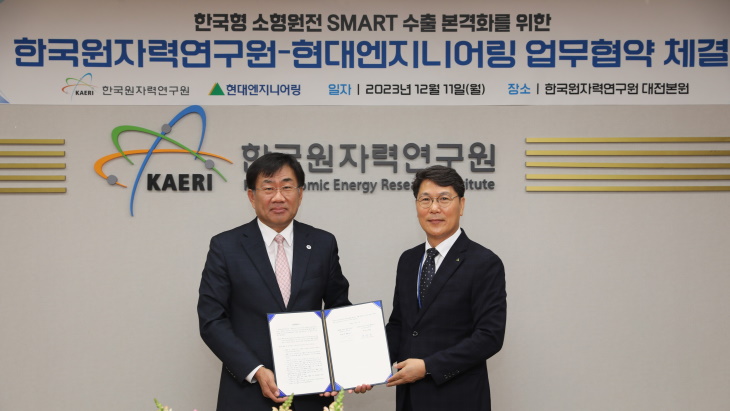
Move a ‘significant step’ in bringing Flex nuclear plant to market.
Emirates Nuclear Energy Corporation (Enec) has signed a memorandum of understanding with British advanced nuclear technology developer MoltexFLEX in a move that marks “a significant step” towards bringing the Flex reactor to market.
The MoU will see the companies form a joint working group to examine the commercial viability of deploying MoltexFLEX’s 24 MW Flex molten salt reactor in the United Arab Emirates.
MoltexFLEX chief executive officer David Landon and Enec chief executive officer Mohamed Al Hammadi signed the MoU at the Cop28 climate conference in Dubai.
Enec, the entity responsible for the deployment and ownership of nuclear energy plants in the UAE, and MoltexFLEX, a subsidiary of Moltex Energy Canada, will assess using Flex reactors for a range of industrial applications including desalination, clean hydrogen production and electricity generation.
Landon said MoltexFLEX will also explore opportunities throughout the Middle East and beyond.
“We firmly believe Enec’s interest highlights the potential of our Flex reactor to provide low-cost, low-carbon heat and electricity for a wide variety of uses,” Landon said.
MoltexFLEX plans to have the first Flex reactor operational around the turn of the decade.
MoltexFLEX said earlier this year it had significantly refined the design of its reactor.
The company said that despite the recent increases in commodity prices around the world, the Flex reactor is still able to generate electricity for less than £30/MWh (€34, $37) when used as a source of baseload power.
MoltexFLEX said its reactor uses a patented system with two molten salts: one acting as a fuel, the other circulating as a coolant. This allows the reactor’s heat to be extracted through natural convection, without the need for pumps.
Roughly the size of a two-storied house, each reactor has the potential to power 40,000 homes. The heat produced by the reactor could be used for water desalination and more efficient hydrogen production.
According to the International Atomic Energy Agency, molten salt reactors operate at higher temperatures, which leads to increased efficiencies in generating electricity. In addition, low operating pressures can reduce the risk of a large break and loss of coolant as a result of an accident, improving reactor safety.
The UAE is building the Arab world’s first commercial nuclear power station at Barakah in Abu Dhabi, with APR-1400 nuclear power plants supplied by Korea Electric Power Corp.
Unit 3 at Barakah began commercial operation in February, bringing total production from the first three units at the four-unit facility to up to 4,200 MW.
Enec has said the station’s four plants will supply up to 25% of the UAE’s electricity needs once fully operational.
DUIVEN - Komt er in de toekomst een kleine kerncentrale in Duiven? De gemeente wil de mogelijkheid daarvoor in in ieder geval onderzoeken. De centrale zou dan komen op bedrijventerrein InnoFase, waar verschillende bedrijven zitten. De bouw van een kerncentrale roept flink wat vragen op. De experts leggen uit hoe het zit.
Over wat voor kerncentrale gaat dit?
Een zogeheten Small Modular Reactor, kortweg SMR. Wat dat precies is? Een kernreactor van een kleiner formaat dan de gebruikelijke reactoren die je nu in bestaande kerncentrales vindt, zegt woordvoerder Willem Boersma van de Autoriteit Nucleaire Veiligheid en Stralingsbescherming (ANVS).
Bij een 'gewone' kerncentrale wordt de reactor ter plekke gebouwd, bij een SMR ligt dat anders. Boersma: "Bij SMR’s worden verschillende onderdelen in modules in centrale fabrieken gemaakt, niet op de plaats waar de reactoren uiteindelijk komen te staan. Op de uiteindelijke locatie worden deze onderdelen in elkaar gezet." Dit type is dus in de regel wat kleiner dan bekende kerncentrales, bijvoorbeeld zoals die in Borssele.
Maar hoe groot is de reactor dan in praktijk? Joost van den Broek, directeur consultancy bij de Nuclear Research Group (NRG) met kantoren in Petten en Arnhem, zegt dat dat in praktijk verschilt. "De omvang voor een SMR varieert van enkele zeecontainers voor de kleinste, tot enkele voetbalvelden voor de grootste. Een kleinere reactor is makkelijker in te passen in het energiesysteem. De inmiddels gesloten kerncentrale Dodewaard kun je qua omvang vergelijken met een SMR. Die was echter niet modulair gebouwd, maar een uniek exemplaar."
Hoe gaat Duiven dit aanvliegen?
De gemeente Duiven zegt dus serieus te willen onderzoeken of een eigen kerncentrale in haar gemeente haalbaar is. Maar hoe gaat het stappenplan? "In het nieuwe coalitieakkoord is opgenomen dat we openstaan om te onderzoeken wat de haalbaarheid is van een kleine kerncentrale op bedrijventerrein InnoFase. De nadruk ligt hier op het doen van onderzoek: we willen kijken wat er eventueel mogelijk is", zegt een woordvoerder van de gemeente Duiven.
"Er moet zorgvuldig worden afgewogen wat de voor- en nadelen zijn van een kleine kerncentrale op InnoFase. Hoe die kerncentrale er dan mogelijk uit komt te zien, is op dit moment nog niet duidelijk. Er is nog geen beeld van de omvang of de fabrikant van een mogelijke kleine kerncentrale."
Hoe veilig is een kleine kerncentrale?
De ANVS legt uit dat er aan kleinere reactoren minder gevaar zit, omdat er bijvoorbeeld minder gekoeld hoeft te worden. De organisatie WISE, die is voortgekomen uit de anti-kernenergiebeweging uit de jaren tachtig en wiens missie het is om kernenergie uit de wereld te bannen, is het daar niet mee eens. "Een kerncentrale is een kerncentrale. Of hij nou klein is of groot, hij is altijd gevaarlijk", benadrukt woordvoerder Gerard Brinkman.
Zien mensen kernenergie wel of niet zitten?
De mening over wel of niet kernenergie is onlangs nog onderzocht, in het kader van de recente Tweede Kamerverkiezingen. Volgens Kieskompas blijkt 55 procent van de inwoners in Gelderland het eens, of helemaal eens te zijn met de stelling 'Nederland moet meer kerncentrales bouwen'.
Ook het CBS ziet het aantal voorstanders vóór kernenergie groeien. Door de oorlog in Oekraïne en de onrust op de energiemarkt is er in veel landen een omslag te zien in het sentiment rond kernenergie. Ook door de klimaatproblematiek lopen meer mensen warm voor kernenergie omdat kerncentrales geen broeikasgassen uitstoten.
Hoe snel kan zo'n kerncentrale er staan?
Het valt moeilijk te zeggen hoe snel zo'n kerncentrale gebouwd kan zijn. Sterker, het is nog maar de vraag of er in Duiven ooit écht een centrale komt. Er wordt op dit moment alleen gekeken naar de haalbaarheid, dus het hele idee kan ook nog worden afgeblazen. Qua vergunningsvoorwaarden gelden voor kleine kerncentrales dezelfde eisen als voor grote centrales. Dat betekent dat de ANVS de veiligheid van de installatie beoordeelt voordat een vergunning wordt verleend.
Volgens NRG in Arnhem kan de bouw van een kleine centrale snel verlopen, wanneer de gehele keten van SMR's is opgezet en er bouwervaring is, maar die is er nu dus nog niet. Directeur consultancy bij de Nuclear Research Group (NRG) Joost van den Broek: "Van vergunningsaanvraag tot en met de bouw is een minimale doorlooptijd van circa zeven jaar realistisch. Uiteraard kan een kleinere SMR sneller gebouwd worden dan een grote. De kosten variëren van circa 100 miljoen euro voor een kleine tot 2-3 miljard euro voor een grote SMR. "
Source: https://www.world-nuclear-news.org/Articles/Crystal-River-reactor-vessel-removal-completed
Work to segment, package and remove the reactor vessel and its internal components has been completed in less than two years thanks to Orano's use of its patented Optimised Segmentation process. The operation included industry-first lifts carried out by Mammoet.
The Optimised Segmentation process significantly reduced the amount of segmentation work, accelerated the removal from the reactor containment building, and achieved project completion well within the six-year contract schedule, Orano said.
The reactor vessel internals were cut up underwater and categorised based on radioactivity. Those that were classed as Greater-than-Class-C - one of the four classes of low-level radioactive waste according to the US Nuclear Regulatory Commission's waste classification system - were separated and packaged for long-term storage onsite. The remaining low-level radioactive waste was then repacked into the vessel in a precise arrangement to optimise the transportation and cost-effectiveness of disposal.
The repacked vessel - still in its original upright orientation in the reactor cavity - was then drained, filled with an engineered grout, and separated into three pieces by using a diamond wire saw. The three segmented pieces were lifted out and transferred into custom-built packages, which were also filled with grout to immobilise the contents before welding shut in preparation for shipment to disposal.
The final stage was completed in October with the segmentation, packaging, and transfer out of the reactor building of the bottom section of the three-piece partitioned reactor vessel, followed by a cleanup of the emptied reactor cavity, Orano said. The process resulted in a total of four large packages for shipment and disposal offsite: three Class A industrial-type containers and one Class C Type B container. Two canisters of Greater-Than-Class-C waste were placed in the existing onsite dry storage facility for used nuclear fuel. More traditional segmentation into many small pieces would have required about 80 shipments to a disposal site, the company added.
Pierre Marty, executive vice-president of Orano DS International Operations and CEO of Orano GmbH, said the "outstanding" performance at Crystal River followed on from work at Vermont Yankee and Orano's experience decommissioning several German sites, including at Brunsbüttel, an 800 MWe boiling water reactor (BWR). "At Orano DS, we share our experiences and best practices across all of our projects to always provide our customers with the accumulated benefits of our lessons learned," he said.
Lifting efficiency
Mammoet assisted Orano with the extraction of the sectioned 540-tonne vessel, and said its prior knowledge of the facility from previous steam generator replacement work, combined with early involvement with Orano to plan the process and provide a workable solution for handling the reactor parts, was crucial to the first-time application of the optimised segmentation method.
Mammoet's strand jack system lifted, transferred, and then lowered the segmented reactor vessel pieces into the transport and disposal packages at ground level for removal from the reactor building.
"Altogether, Mammoet completed the reactor vessel removal with a quicker, more cost-effective, and more efficient solution using the strand jacks' greater lifting power and minimal required space to position the equipment inside an already congested containment area," the company said.
Mammoet Project Manager Sidney King said the company put together an expert team with decades of nuclear experience to assemble and operate strand jack system. "Execution of the lifts were performed flawlessly, and it is exciting to see the experience, technical expertise, and Mammoet's innovative thinking come together to be a part of this historic moment in nuclear decommissioning," he said.
Crystal River 3, a single unit pressurised water reactor in Florida, began commercial operation in 1977, but was permanently closed in 2013. In 2020, owner Duke Energy contracted Accelerated Decommissioning Partners - a joint venture between NorthStar Group Services and Orano USA - to begin decontamination and dismantlement of Crystal River 3 in 2020 instead of 2067 as originally planned.
Now that the cooling system, reactor vessel, and vessel internals have been removed, the CR3 reactor building has been turned over to NorthStar for demolition.
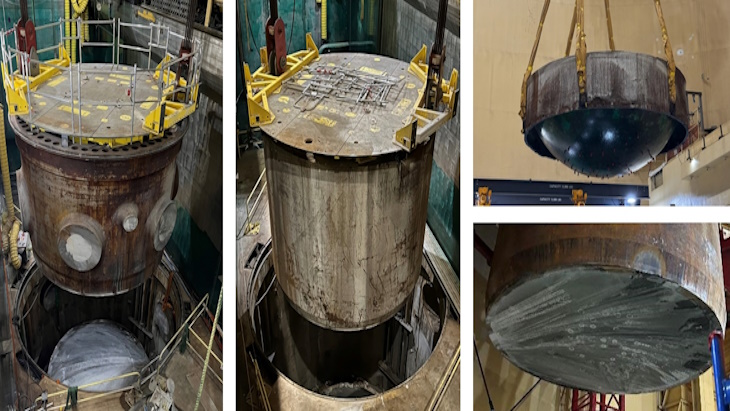
Source: https://www.world-nuclear-news.org/Articles/Peregrine-falcon-from-Czech-nuclear-plant-being-ca
One of the first peregrine falcons hatched at the Dukovany nuclear power plant, in 2020, is in a rescue centre after being discovered with shotgun injuries.
The operator of the nuclear power plant, ČEZ, has been involved in a programme with Alka Wildlife to help boost the numbers of the endangered species since 2011, with nesting sites high up on buildings and cooling towers at power stations in the country. During that time at least 163 chicks have embarked on their first flight at one of the power stations. Since 2020, when Dukovany got its first breeding pair, eight chicks are known to have been produced.
This particular three-year-old bird was one of a set of quadruplets, the first to be hatched at the Dukovany plant, on an 125-metre high ventilation chimney.
He was discovered injured in the north of Moravia, which is about 45 kilometres from his birthplace. ČEZ said he was being cared for by vets but is unlikely to be able to fly again, because of the injuries.
Roman Havlín, director of the Dukovany nuclear power plant, said: "It is sad news, especially when we realise that on the one hand we are trying to save them in the wild, and on the other hand someone is harming them. But for us it means that we will try all the more to create conditions for their safe nesting and the preservation of the entire species for future generations. And I believe that we will be as successful in this as we have been so far."
Peregrine falcons are the world's fastest diving bird, according to Guinness World Records, with one clocking up a diving speed of 242 mph (389 km/h). Their numbers dropped in the middle of the 20th Century in many countries, thought to be linked to the use of DDT as a pesticide on crops, but their numbers have been increasing since the end of DDT use, and with increased conservation measures.
According to Alka Wildlife, peregrine falcons have seen a gradual growth in their number in recent years after previously being critically endangered in the Czech Republic. They say that part of the reason for the recovery has been the work with companies such as ČEZ to create the alternatives to natural nesting sites by installing nest boxes on power plant high chimneys as "normally, falcons will nest in rocky sites at altitudes above 100m".

Source: https://www.world-nuclear-news.org/Articles/Pilot-plant-for-Lightbridge-fuel-mooted-for-Ohio
Lightbridge Corporation and Centrus Energy Corp are to carry out a front-end engineering and design (FEED) study to add a dedicated fabrication facility for Lightbridge's next-generation nuclear fuel at the American Centrifuge Plant in Piketon, Ohio.
The FEED study will identify infrastructure and licensing requirements for the Lightbridge Pilot Fuel Fabrication Facility (LPFFF), as well as the estimated cost and construction schedule. The study will be led by Centrus subsidiary, American Centrifuge Operating, LLC, and is expected to be completed in 2024. The contract for the FEED study was signed at COP28 in Dubai.
The Piketon plant began uranium enrichment operations in October and Centrus delivered the first shipment of high-assay low-enriched uranium (HALEU) produced there the following month. The Piketon plant is the only HALEU production plant in the world outside of Russia and would be an ideal site for Lightbridge’s proposed facility, Centrus President and CEO Daniel Poneman said. "Since Lightbridge Fuel has the potential to bring HALEU and its benefits to the existing fleet of reactors, this partnership holds the potential to significantly expand the market for HALEU," he added.
Lightbridge President and CEO Seth Gray said the agreement with Centrus was a "landmark moment" towards establishing a pilot-scale manufacturing facility. "At COP28, the United States joined other countries in pledging to triple nuclear power globally by 2050. We expect the added power produced by reactors upgraded with Lightbridge Fuel - and new small reactors powered by our fuel - to be key to meeting that goal," he added.
Lightbridge Fuel is a proprietary next-generation nuclear fuel technology for existing light water reactors and pressurised heavy water reactors. The company says the metallic fuel rods - which operate at a lower temperature than standard fuel - are significantly more economical and safer than traditional fuel, and also offer enhanced proliferation resistance. It is also developing Lightbridge Fuel for new small modular reactors. Lightbridge's fuel technology has been developed with support from the US Department of Energy through its Gateway for Accelerated Innovation in Nuclear programme.
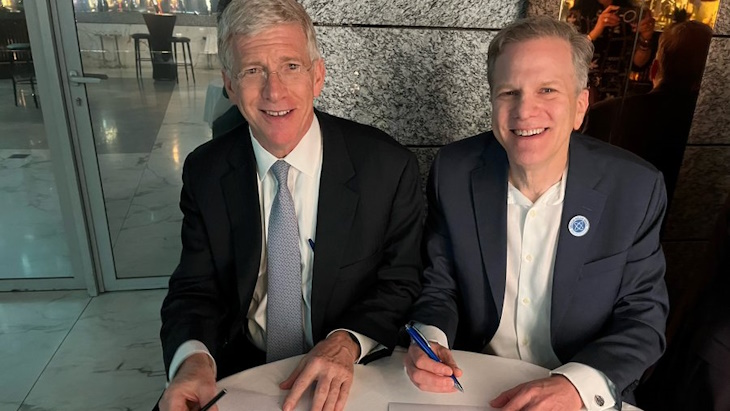
Source: https://www.world-nuclear-news.org/Articles/Further-contracts-awarded-to-progress-UK-s-fusion
The United Kingdom Atomic Energy Authority (UKAEA) has awarded ten contracts worth a total GBP11.6 million (USD14.6 million) to nine organisations to develop their innovative technologies for fusion energy.
The contracts - awarded to start-ups, small-medium enterprises, established companies, and academia - range between GBP500,000 and GBP1.4 million, and are funded by the Fusion Industry Programme.
The programme - part of the government's GBP484 million support package for UK research, announced last year - was launched to drive long-term economic growth by developing technology and skills that can both support domestic programmes and be exported globally. The Fusion Industry Programme was allocated GBP42.1 million as part of this package to stimulate innovation and to accelerate the development of the fusion industry.
Eighteen projects received initial Phase 1 funding at the end of last year.
The latest contracts, selected to progress to Phase 2, address prototypes for novel fusion materials, manufacturing and technologies; and developing heating and cooling systems for fusion machines.
The eight organisations focusing on manufacturing and materials are 3-Sci, Alloyed, Duality Quantum Photonics, Full Matrix, Jacobs, Oxford Sigma, TWI (Coldspray technology), and University of Birmingham. The two organisations focused on heating and cooling technologies are Cal Gavin and TWI (Coreflow technology).
This latest announcement follows the award of Fusion Industry Programme contracts earlier this year for organisations which had successfully demonstrated the feasibility of technologies focused on digital engineering and fusion fuel requirements.
"Delivering fusion energy is one of the great scientific and engineering challenges of our time," said UKAEA Chief Development Officer Tim Bestwick.
"The Fusion Industry Programme is supporting businesses to overcome these challenges and help make fusion a commercial reality. These organisations have been awarded contracts after successfully demonstrating the feasibility of their concepts through earlier stages of the Fusion Industry Programme and will now develop their technologies to the 'proof of concept' stage."
The UKAEA carries out fusion energy research on behalf of the UK government, overseeing the country's fusion programme, including the MAST Upgrade (Mega Amp Spherical Tokamak) experiment as well as hosting the JET at Culham, which is operated for scientists from around Europe. It is also developing its own fusion power plant design with plans to build a prototype known as STEP (Spherical Tokamak for Energy Production) at West Burton in Nottinghamshire, which is due to begin operating by 2040.
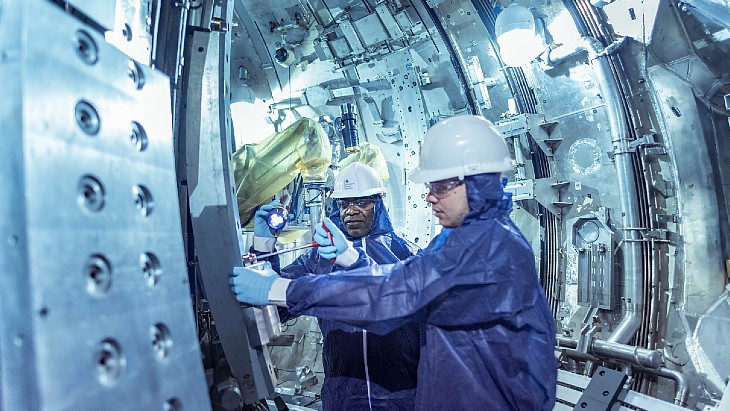
Source: https://www.world-nuclear-news.org/Articles/Six-SMR-power-plants-approved-in-Poland
Poland's Ministry of Climate and Environment has issued decisions-in-principle for the construction of power plants based on GE Hitachi Nuclear Energy's BWRX-300 small modular reactor (SMR) at six locations. A total of 24 BWRX-300 reactors are planned at the sites.
In mid-April, Orlen Synthos Green Energy (OSGE) announced it had shortlisted seven locations in Poland for further geological surveys to host SMR plants based on GE Hitachi Nuclear Energy's BWRX-300, for which it holds the exclusive right in Poland. The locations were: Ostrołęka, Włocławek, Stawy Monowskie, Dąbrowa Górnicza, Nowa Huta, Tarnobrzeg Special Economic Zone and Warsaw.
OSGE submitted applications in late-April to the Ministry of Climate and Environment for decisions-in-principle on the construction of plants at six locations, omitting Warsaw from the list.
The ministry has now issued decisions-in-principle for the construction of a total of 24 BWRX-300 reactors at the six locations.
The decision-in-principle is the first decision in the process of administrative permits for investments in nuclear power facilities in Poland that an investor may apply for. Obtaining it entitles OSGE to apply for a number of further administrative arrangements, such as a siting decision or construction licence.
"The decisions we received are an important step towards deep decarbonisation of the Polish economy," Rafał Kasprów, President of the Management Board of OSGE, announced during the Net Zero Nuclear forum at the COP28 climate change conference in Dubai. "It is symbolic that we received the decisions today - with carbon dioxide emissions in Poland reaching 928g CO2/kWh, the highest in Europe and one of the highest in the world.
"The decisions enable us to launch a programme to build a fleet of BWRX-300 reactors in Poland to provide zero-emission, stable energy sources for the energy, industry and heating sectors."
In December 2021, GE Hitachi, BWXT Canada and Synthos Green Energy (SGE) signed a Letter of Intent to cooperate in deploying BWRX-300 SMRs in Poland. OSGE - a joint venture between chemical producers SGE and PKN Orlen - submitted an application to Poland's National Atomic Energy Agency on 8 July last year for the assessment of the reactor design.
The Ministry of Climate and Environment has already issued decisions-in-principle for the construction of two large nuclear power plants: one for a 3750 MWe plant in Pomerania using Westinghouse's AP1000 technology, the other for a plant comprising two South Korean-supplied APR1400 reactors in the Patnów-Konin region.
A decision-in-principle has also been issued for copper and silver producer KGHM Polska Miedź SA's plan to construct a NuScale VOYGR modular nuclear power plant with a capacity of 462 MWe consisting of six modules, each with a capacity of 77 MWe.
The latest developments in Poland come amid speculation about what is going to be the next government's stance on nuclear energy, following elections in October. Opposition leader Donald Tusk has said that a coalition government of three opposition groups to be led by him will be formed by 12 December.
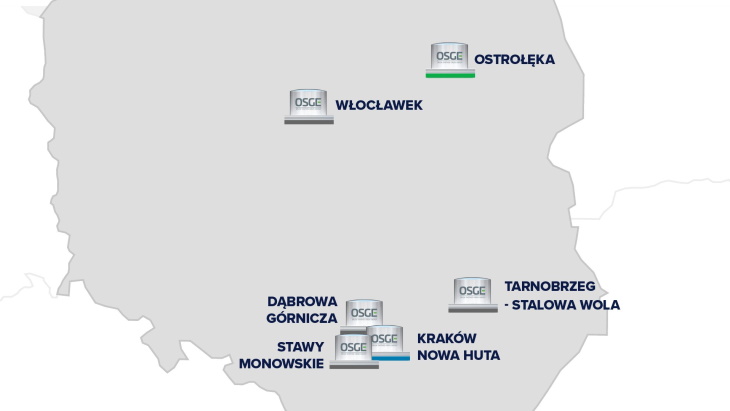
Source: https://www.world-nuclear-news.org/Articles/Chernobyl-s-original-shelter-gets-six-year-extensi
An extension has been agreed for the dismantling of the parts of the original shelter facility most at risk of collapse. The structure was built in 206 days following the 1986 accident at Ukraine's Chernobyl nuclear power plant.
The licence for the storage of radioactive waste within the shelter has been extended from 2023 to 2029, with a 2025 deadline for the development of a new design for the dismantling of "unstable structures with an unacceptably high probability of collapse", and a 31 October 2029 deadline for completion of the dismantling.
The Shelter Object - also known as the 'sarcophagus' - still contains the molten core of the reactor and an estimated 200 tonnes of highly radioactive material. The stability of the structure has developed into one of the major risk factors at the site. A project to shore up the structure was completed in mid-2008, but at that time the maximum life of the stabilised structures was determined as the end of 2023.
According to the site operator, the "fast pace of its construction and extreme radioactive strain on the building staff caused the construction defects ... actually, at the time of Shelter facility acceptance for commissioning it was clear that the newly constructed facility was only a makeshift solution ... and the foremost task was the development of a new facility design (which has been done with the New Safe Confinement) which would isolate reliably the Chernobyl disaster epicentre from the environment as well as enable the disassembling of the precarious shelter".
The original deadline had been to complete the work by the end of October 2023, however a series of issues have been cited for the delay - including funding delays, the impact of COVID-19 and the Russia-Ukraine war which saw Russian forces occupy the site for two months in 2022.
The site operators said that as a result of these factors they "and contracting companies carried out additional surveys of the building structures, made estimates of the structures’ durability and supporting capability. Technical reports on the results of these activities underpinned the substantiation of the shelter operation period extension. Based on this substantiation, the State Nuclear Regulatory Inspectorate of Ukraine made a decision to approve the alterations to the licence".
The original shelter over the destroyed unit 4 at Chernobyl was constructed at pace, and the international Shelter Implementation Plan in the 1990s had three phases - firstly to stabilise it and secondly to build a larger secure construction to enclose it - the New Safe Confinement which was completed in 2017 to pave the way for the dismantling and decommissioning stage.
According to World Nuclear Association, the hermetically sealed New Safe Confinement (NSC) "will allow engineers to remotely dismantle the 1986 structure that has shielded the remains of the reactor from the weather since the weeks after the accident. It will enable the eventual removal of the fuel-containing materials in the bottom of the reactor building and accommodate their characterisation, compaction, and packing for disposal. This task represents the most important step in eliminating nuclear hazard at the site - and the real start of dismantling."
The NSC is the largest moveable land-based structure ever built - with a span of 257 metres, a length of 162 metres, a height of 108 metres and a total weight of 36,000 tonnes equipped - and with a lifetime of 100 years has been designed to allow for the eventual dismantling of the ageing makeshift shelter from 1986 and the management of radioactive waste. It has also been designed to withstand temperatures ranging from -43°C to +45°C, a class-three tornado, and an earthquake with a magnitude of 6 on the Richter scale.
Because of its vast dimensions the structure had to be built in two halves which were lifted and successfully joined together in 2015. The process of sliding the entire arched structure from its assembly point into position over unit 4 was completed on 29 November 2016. The original licence, from the State Nuclear Regulatory Inspectorate of Ukraine, for decommissioning was issued in 2019 following fitting out and more than a year of pilot operation and testing of the New Safe Confinement building.

Company also continuing ‘pre-application dialogue’ with US regulator.
The UK government has awarded Holtec Britain £30m (€35m, $37m) of funding to complete Steps 1 and 2 of the generic design assessment (GDA) as the first step towards UK deployment of the company’s SMR-300 small modular reactor.
Holtec said it will out the advanced pressurised water reactor unit through the scrutiny of the UK regulators – the Office for Nuclear Regulation, the Environment Agency and Natural Resources Wales – while continuing its pre-application dialogue with the US Nuclear Regulatory Commission and other regulators in parallel.
UK minister for nuclear Andrew Bowie said the government is committing public funds to nuclear for the first time in a generation. “Today’s news represents a multi-million investment to develop cutting-edge technology which could transform how power stations are built by making construction faster and cheaper,” he said.
Holtec is also taking part in a competition announced earlier to be chosen for funding for SMR deployment. That competition is being run by Great British Nuclear, a body established to help deliver the government’s commitment to provide a quarter of the UK’s electricity from nuclear energy by 2050, up from around 14% today.
Holtec said it is planning a large expansion in the region should it be successful in the Great British Nuclear competition, with a factory to build the major mechanical SMR components and other new businesses to support deployment.
Other SMR projects include Rolls-Royce SMR proposals to build reactors at Oldbury and Berkeley in the southwest of England and Balfour Beatty’s proposals with Holtec Britain to develop plans for a SMR-160 pressurised light-water reactor in the UK.
The London-based Nuclear Industry Association welcomed the funding for Holtec, saying it shows the UK is committed to its new nuclear programme, “which needs to be rolled out at pace and at scale to ensure we ramp up nuclear so we can deliver clean power for net zero and good, green jobs for our communities”.
Holtec has been developing its SMR-300 unit since 2011. The SMR-300 is a pressurised water reactor producing around 300 MW of electrical power or 1,050 MW of thermal power for process applications.
As coal consumption continues to rise worldwide despite global efforts to slash greenhouse gas emissions, several countries are eyeing a strategy for using advanced nuclear power including small modular reactors (SMRs) to reduce reliance on the most polluting fossil fuel. At an event today at the IAEA’s Atoms4Climate pavilion, speakers from Canada, Romania and the United States shared their experience and plans repurposing former coal sites for nuclear power—and thereby ensuring a just energy transition by reaping the economic and environmental benefits of switching to this clean and reliable technology.
The Canadian province of Ontario is one of the world’s leading examples of how replacing coal with nuclear can decarbonize electricity production and clean up local air pollution, and was highlighted in the book A Bright Future. The last coal fired electricity plant in Ontario was mothballed in 2014 and replaced with refurbished nuclear reactors that had previously been shut down. The results: electricity generation in Ontario produces about 25 grams of CO2 per kWh, well under levels consistent with the objectives of the Paris Agreement (50 grams), compared with 230 grams of CO2 per kWh previously.
The effort also cleaned up local air pollution. “We turned the sky from orange to blue in a matter of 15 years. How? With renewables as well, but largely on the back of nuclear production,” Pat Dalzell, Executive Director of Corporate Affairs for Bruce Power, which operates the province’s eight nuclear reactors, said at the IAEA event. “Now when you look up at the sky on a hot summer day in Toronto, the sky is blue," he said, adding that nuclear power facilities in the province account for some 22,000 jobs, with another 5,000 expected to be created when the operating lifetime of existing reactors are extended for several more years.
Coal provides more than one third of the world’s electricity and is responsible for the largest share of CO2 emissions from the energy sector, making its phase-out key to tackling climate change. In both Romania and the United States, there are plans for nuclear power to replace coal as a low carbon primary energy source that provides 24/7 supply security.
Supply chains are also similar for coal and nuclear plants, meaning jobs can be preserved, and some of the existing infrastructure can continue to be repurposed for the nuclear plant. But challenges also need to be addressed related to decontaminating coal sites, and meeting the requirements for nuclear safety and nuclear waste disposal, among other examples.
In Romania, a site in Doicesti that currently hosts a coal plant has been identified as the preferred location for the country’s first SMR deployment. “We are lucky to have a very high percentage of public acceptance (of nuclear power), but we have never been complacent and always worked hard to show that the community is important to us,” Ana Birchall of state nuclear power corporation S.N. Nuclearelectrica said at the event.
In the US, a location in the state of Wyoming near the coal-fired Naughton power plant, which is due to retire in 2025, has been selected as the preferred site for a sodium-cooled fast reactor with a molten salt-based energy storage system. “Displaced coal workers will be able to find employment at the nuclear facility, and the nuclear facility will also be able to employ more people than the coal facility,” said Jason Hansen, a Senior Economist at Idaho National Laboratory.
Russia’s Angarsk ElectroChemical Combine (AECC in Irkutsk) will begin enriching uranium hexafluoride supplied by the Siberian Chemical Combine (SCC in Seversk) in 2024. Both are part of Rosatom’s fuel company TVEL. AECC Director Vyacheslav Glushenkov said the plant was currently processing its tailing dumps to extracting additional uranium. The plant extracts uranium-235 for re-use in nuclear fuel from the depleted uranium hexafluoride (DUHF) stored on site.
AECC was established in 1957 to undertake uranium enrichment and conversion. Two buildings (802 and 804) which housed gaseous diffusion uranium enrichment facilities were shut down in 1987 and 1990, after Russia switched to gas centrifuge technology and are now being decommissioned. Conversion activities ceased in 2014 after TVEL in 2011 began implementing a programme to concentrate Russian conversion capacities at the SCC. Since December 2014 AECC has focused on extracting uranium-235 stored DUHF. The remaining product is sent for further processing to the Electrochemical Plant Production Association.
The existing DUHF reserves at AECC will provide raw materials until 2035. “But starting next year we will also have raw materials from the Siberian Chemical Combine,” said Glushenkov. He noted that the plant continues to decommission structures where conversion production waste is stored. "These are ten vaults. Since 2020, we have begun to eliminate them. Four storage facilities have already been completely cleaned out, all radioactive waste has been extracted, processed, and the processed products have been sent to the National Operator for Radioactive Waste Management. We plan to completely liquidate the remaining six storage facilities by the end of 2027,” he noted.
While the main activity of AECC remains the production of enriched uranium hexafluoride, the company is also developing new non-nuclear business areas. In March 2021 it launched a pilot plant for the production of battery-quality lithium hydroxide for export targeting manufacturers of lithium-ion battery components. AECC expects to complete development of the lithium hydroxide production technology for further industrial production by 2024, said Glushenkov.
“We are currently finalising the production technology [at the pilot plant launched in 2021] and plan to finally reach the necessary conditions within the next year to move to industrial production,” he said. He added that “battery-quality products” had been produced at the pilot plant which was being sold to 20 companies. AECC Deputy General Director for Development Oleg Osipenko confirmed the plant’s previously announced plans to launch industrial production of lithium hydroxide in 2027 with a capacity of 10,000 tonnes a year.
“But conceptually, we assume that this production will expand to 20 thousand tonnes by 2032,” Osipenko said, noting that the plant will provide raw materials for those Russian enterprises planning to manufacture lithium batteries
According to Glushenkov, by the end of 2023, AECC expects revenue to increase by RUB7.6bn ($82.5m) compared with 2022. The share of non-nuclear production is expected to be 15%. The plant’s strategy assumes that by 2030, revenue will grow to RUB50bn from its non-nuclear production, its main business of uranium enrichment and the decommissioning of nuclear and radiation hazardous facilities.
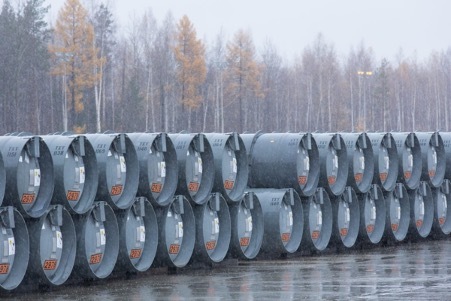
Source: https://www.world-nuclear-news.org/Articles/UK-regulators-begin-assessment-of-Holtec-SMR
The UK's Office for Nuclear Regulation (ONR), along with the environment regulators for England and Wales, have been asked by the Department for Energy Security and Net Zero to begin a Generic Design Assessment for Holtec International's SMR-300 small modular reactor design.
Generic Design Assessment (GDA) is a process carried out by the ONR, the Environment Agency and Natural Resources Wales to assess the safety, security, and environmental protection aspects of a nuclear power plant design that is intended to be deployed in Great Britain. Successful completion of the GDA culminates in the issue of a Design Acceptance Confirmation from the ONR and a Statement of Design Acceptability from the Environment Agency.
In May 2021, the UK's Department for Business, Energy and Industrial Strategy opened the GDA process to advanced nuclear technologies, including SMRs.
Following its readiness review of Holtec's application, the department concluded that the design was ready to enter the GDA process.
"The GDA assessment will look to actively explore opportunities to maximise the value of international regulatory collaboration and identify efficiencies in processes," ONR said.
Holtec has been developing its small modular reactor (SMR) unit since 2011. The SMR-300 is a pressurised water reactor producing around 300 MW of electrical power or 1050 MW of thermal power for process applications, and the company says it has undergone several design evolutions, the most recent of which is the incorporation of forced flow capability overlayed on gravity-driven flow in the plant’s primary system.
Holtec noted the UK government has awarded its UK subsidiary, Holtec Britain, GBP30 million (USD37.7 million) of grant funding from the Future Nuclear Enabling Fund for Holtec to complete Steps 1 and 2 of the GDA.
"The application exceeded the quality thresholds across all four assessment criteria and successfully completed the department's due diligence and governance approvals processes," the Department for Energy Security and Net Zero said.
"Holtec looks forward to putting our advanced pressurised water reactor, designed with inherent safety, through the scrutiny of the UK regulators ... while continuing our ongoing pre-application dialogue with the US Nuclear Regulatory Commission and other regulators in parallel," the company said.
UK Minister for Nuclear Andrew Bowie said: "As the government that revitalised the UK nuclear industry, committing public funds to nuclear for the first time in a generation, we're rapidly expanding our nuclear power capacity to move towards a cleaner energy mix and help deliver net-zero. Today's news represents a multi-million investment to develop cutting-edge technology which could transform how power stations are built by making construction faster and cheaper."
Holtec is participating in the Great British Nuclear SMR competition, where the UK government's ambition is to announce in 2024, which companies the government will support for technology deployment.
Holtec said it is planning a large expansion in the region should Holtec be successful in the Great British Nuclear competition, "locating a factory to build the major mechanical SMR components and other aligned areas of business (clean energy and defence) to support deployment of 5 GW+ of on-grid UK electricity by 2050".

Source: https://www.world-nuclear-news.org/Articles/US-takes-steps-to-jump-start-overseas-SMR-deployme
The US Department of State and US Export-Import Bank (EXIM) have announced a suite of financial tools to support the deployment of advanced nuclear energy systems to help reach net-zero goals. They also announced plans to mobilise more than USD4.2 billion of investment in enrichment and conversion capacity through the five-nation Sapporo 5 collaboration.
The EXIM financial tools aim to support SMR deployments and help US exporters compete in this global market and will help potential clients secure large-scale, flexible financing to turn projects into reality, the Department of State said.
For qualifying transactions, EXIM could provide a loan guarantee or direct loan for up to 22 years post-construction, help the borrower finance exposure fees and interest payments during the construction period, support pre-export disbursement of the loan during equipment fabrication, and work with other Export Credit Agencies to help jointly finance the various components of a given SMR design.
Such EXIM support will be conditional on host governments of SMR projects entering into so-called 123 Agreements with the USA and be parties to the Convention on Supplementary Compensation and other applicable civil nuclear liability conventions. The bank also requires design approval by the US Nuclear Regulatory Commission "or an equivalent foreign regulatory authority acceptable to EXIM".
"The potential of nuclear energy to address both decarbonisation and the growing demand for electricity is clearer than ever before," said EXIM Chair Reta Jo Lewis. "I am proud that EXIM's Board of Directors took this important step to emphasise EXIM's deep commitment that EXIM remains ready and willing to fund creditworthy applications for US SMR exports, which will drive the global energy transition."
The financial tools were approved in a resolution by EXIM's board of directors on 30 November, and the bank has launched an SMR Financing Toolkit to offer further guidance.
Sapporo 5 mobilises fuel cycle support
The State Department also announced the collective intent of the USA, alongside Canada, Japan, France, and the UK, to support increased deployment of zero-carbon, peaceful nuclear energy by expanding nuclear fuel production capacity "across trusted, high-quality suppliers free from manipulation and influence". The group - known as the Sapporo 5 - "will work to mobilise at least USD4.2 billion in government-led and private investment in the five nations' collective enrichment and conversion capacity over the next three years, with a view to further additional private sector finance," it said.
The alliance was launched in April at the Nuclear Energy Forum held alongside the G7 ministers' meeting in Sapporo, Japan, with the five nations intending to collaborate to support the stable supply of fuels for the current nuclear and future nuclear generation fleet.
Representatives of the nuclear industry in the signatory countries said they were "encouraged" by the multilateral move to advance a secure nuclear fuel supply chain.
In a joint statement, Canadian Nuclear Association President and CEO John Gorman, Japan Atomic Industrial Forum President Shiro Arai, Nuclear Energy Institute President and CEO Maria Korsnick, Nuclear Industry Association CEO Tom Greatrex and nucleareurope Director General Yves Desbazeille said: "Earlier this week at COP28, these same governments along with nearly 20 others set an ambition to triple nuclear energy capacity by 2050. As the demand for clean nuclear energy continues to surge around the globe, so too does the need for a reliable and secure fuel supply - which not only advances our decarbonisation and energy independence goals but also strengthens our collective national security. Government action is essential to build up our capabilities, but it will also require the investment of private companies and financial institutions to advance the commitments made today."

